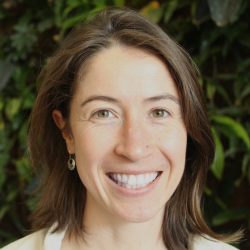Carolyn Beeler of PRI's The World radio broadcast describes crossing the Drake Passage onboard the US icebreaker Nathaniel B. Palmer.
Carolyn Beeler of PRI's The World radio broadcast is onboard the US research vessel Nathaniel B. Palmer. Her first dispatch comes from the port of Punta Arenas, Chile, on the Strait of Magellan.
Carolyn Beeler of PRI's The World radio broadcast reports on the first icebergs seen from the US icebreaker R/V Nathaniel B. Palmer sailing in Antarctica.
Snow on Ice: Into the Ice #4
“Iceberg! Starboard beam.” I was sitting at my computer typing and I think it took a second to sink in for me and everyone else in the room.
Snow on Ice: The little orange submarine #3
The ship bobbed lazily in the Straits of Magellan, ringed by the snow-capped mountains of the far southern Andes, the sun becoming quite warm, the water still as glass. You can imagine what song was stuck in my head as we stood on the 01 Deck looking out at the stern of the ship where the HUGIN Autonomous Underwater Vehicle (AUV) sat waiting to be deployed. It is an orange, not yellow, torpedo-shaped submarine, and unlike the one from the famous Beatles song, it is definitely uninhabitable.
Snow on Ice: Setting Sail #2
We arrived into Punta Arenas on January 26th and met our US Antarctic Program (USAP) representative, Maribel. During our short time in Punta Arenas, we received our polar gear for the trip, participated in mandatory training sessions, and boarded the N. B. Palmer the next evening. We were underway soon thereafter, a day earlier than expected, to go to the refueling pier on the other side of town.
Icelights: Antarctica - These articles answer your burning questions about the frozen continent.
All About Sea Ice: Arctic v. Antarctic - Gives an overview of why sea ice behaves differently at opposite ends of the Earth.
Discovering Antarctica - Designed for students of all ages, this resource is packed full of interactive features, downloads, lesson-based activities, worksheets and teacher notes
Antarctic Geography - Antarctica is the largest and most pristine wilderness on Earth.
Anna Crawford is a Post Doctoral researcher on the DOMINOS project, based at the University of St Andrews. She is applying the Elmer/Ice and HiDEM models to understand fracture processes and calving from Thwaites Glacier, including ice shelf stability and possible future marine ice cliff instability.







